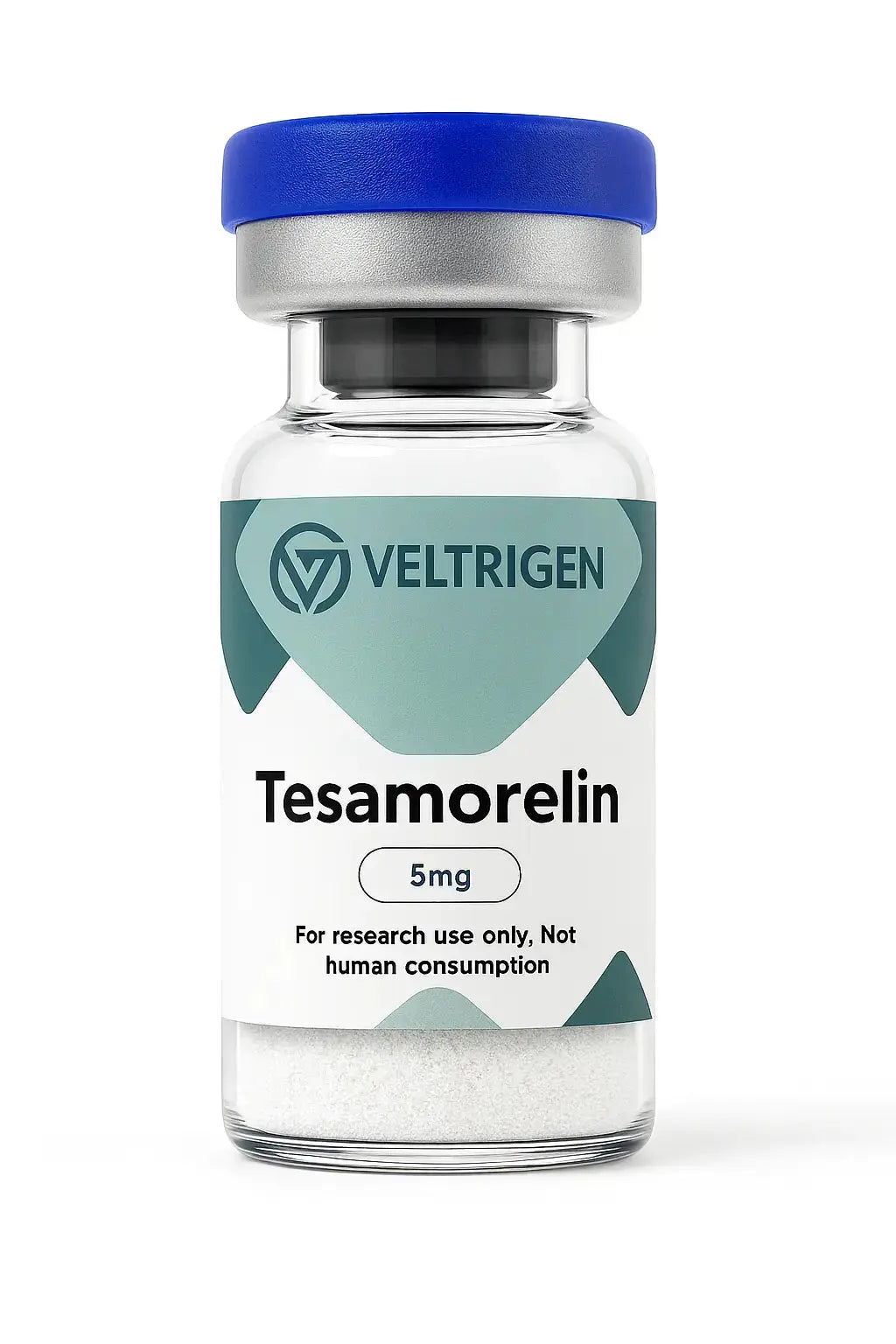
Tesamorelin: Research Insights Into a Synthetic GHRH Analogue
Share
Introduction
Tesamorelin is a synthetic analogue of growth hormone–releasing hormone (GHRH) that has become a focal point of laboratory research. Structurally, it is a peptide consisting of 44 amino acids, designed to be more stable than natural GHRH while retaining its ability to stimulate downstream pathways in experimental models.
At Veltrigen, we provide high-purity research peptides such as Tesamorelin for laboratory investigation only. This article summarizes what makes Tesamorelin noteworthy in research contexts, highlights key study areas, and outlines its role within the broader peptide research landscape.
Molecular Background
Class: Synthetic peptide; GHRH analogue
Sequence: 44 amino acids
Mechanism (Research Context Only): In laboratory models, Tesamorelin interacts with GHRH receptors, activating intracellular pathways associated with growth hormone release.
Stability: Modified for improved half-life compared to endogenous GHRH, enabling more consistent results in controlled studies.
Key Research Areas
1. Growth Hormone Regulation Models
Tesamorelin is widely studied in experimental settings that explore growth hormone pulsatility and secretion mechanisms. Researchers use it to better understand how synthetic analogues compare to native GHRH in stimulating pituitary function under controlled conditions.
2. Metabolic Research
Tesamorelin has been investigated in research settings that examine lipid metabolism, insulin sensitivity, and body composition models. These studies are not clinical guidance but provide insights into how GHRH analogues may influence metabolic pathways at the molecular and cellular levels.
3. Cellular and Genetic Pathways
Laboratory work has extended into studying how Tesamorelin may influence gene expression linked to metabolic regulation, as well as downstream effects on IGF-1 signaling pathways. This research helps clarify the peptide’s unique role compared with other GHRH analogues.
Comparison to Other Peptides
Within peptide research, Tesamorelin is often compared to:
CJC-1295 – another GHRH analogue with modifications for extended half-life.
Ipamorelin – a growth hormone secretagogue (GHS) with a different receptor target.
Native GHRH – the natural hormone, used as a baseline for comparative studies.
By analyzing Tesamorelin alongside these molecules, researchers gain a broader perspective on growth hormone modulation strategies.
Research Significance
Tesamorelin remains a valuable tool for:
Elucidating endocrine feedback loops in growth hormone regulation.
Exploring metabolic pathways in controlled environments.
Comparative peptide research, advancing understanding of synthetic vs. natural hormone analogues.
Its stability and specific receptor interactions make it especially useful for laboratories aiming to produce reproducible, high-quality data.
Compliance & Disclaimer
Veltrigen supplies Tesamorelin strictly for laboratory research use only. It is not for human consumption, medical, or veterinary use. The information provided here is for educational and informational purposes to support researchers and is not intended as medical advice.